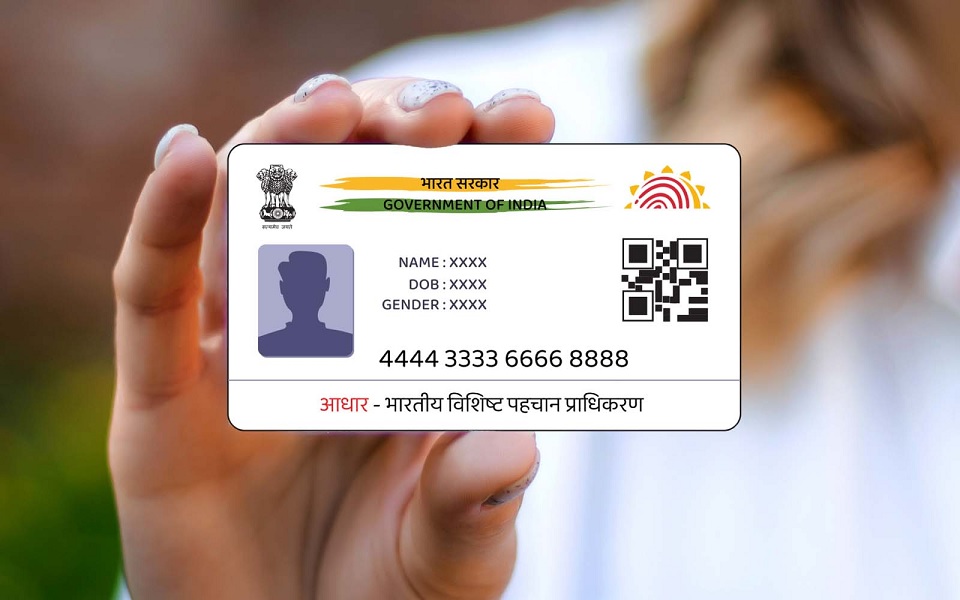
aadhar card
In recent years, the Aadhar Card has become an essential document for every resident of India, serving as a centralized identification that simplifies access to numerous government and private services. Issued by the Unique Identification Authority of India (UIDAI), this 12-digit unique identification number has revolutionized how individuals verify their identity and access welfare benefits.
This comprehensive guide provides you with everything you need to know about the Aadhar Card—its benefits, the application process, uses, privacy concerns, and more.
Table of Contents
What is the Aadhar Card: Aadhar Card
The Aadhar Card is a 12-digit identification number issued to residents of India. It is a universal ID that combines various pieces of information, including biometrics (fingerprints and iris scans) and demographic data, to uniquely identify each individual. Managed by UIDAI, Aadhar is widely accepted across the country and helps streamline processes across sectors such as finance, healthcare, education, and more.
Why Was Aadhar Introduced?
Aadhar was introduced with the aim of creating a reliable, universal identification system for Indian residents. By linking individuals directly to government services, Aadhar addresses issues of identity theft, helps to eliminate duplicate identities, and improves the efficiency of government subsidies and welfare distribution.
Importance of Aadhar Card
Key Benefits of Having an Aadhar Card
Owning an Aadhar card offers several benefits:
- Reliable Proof of Identity and Address: The Aadhar card is recognized across India as an official ID, accepted for various procedures such as opening bank accounts, applying for passports, and more.
- Seamless Access to Government Schemes: Many government programs, including those under the Direct Benefit Transfer (DBT) scheme, require beneficiaries to link their Aadhar to their bank accounts for receiving subsidies.
- Digital Identity: Aadhar helps in creating a digital ecosystem by allowing people to authenticate themselves online, making access to services quicker and more efficient.
Legal Mandates Surrounding Aadhar
While Aadhar is not mandatory for every activity, the Indian government mandates its use for specific services, especially those involving public funds. It is essential for services like filing income tax returns, accessing government welfare schemes, and linking bank accounts. However, for private services and organizations, linking or providing Aadhar details is voluntary.
How to Apply for an Aadhar Card
Applying for an Aadhar Card is a straightforward process, but there are specific steps to follow to ensure a successful application.
Eligibility Criteria
Aadhar enrollment is available to all residents of India, including Non-Resident Indians (NRIs) who have lived in India for at least 182 days in the past 12 months. The enrollment process is free of charge.
Step-by-Step Application Process
- Locate an Enrollment Center: Visit the UIDAI website to find the nearest Aadhar Enrollment Center authorized by the government.
- Document Verification: Gather necessary documents that verify your identity, address, and age. Acceptable documents include passports, voter IDs, utility bills, and birth certificates.
- Biometric Data Collection: At the enrollment center, biometric data, including fingerprints, iris scans, and a photograph, are taken for identity verification.
- Submission and Verification: Submit the form and documents, after which the enrollment officer will verify your details. Once verified, your Aadhar card will be processed and sent to your registered address.
Documents Required
The following types of documents are generally required:
- Proof of Identity: Passport, PAN card, or voter ID
- Proof of Address: Utility bill, bank statement, or rental agreement
- Proof of Age: Birth certificate or school certificate
Updating and Correcting Aadhar Information
Over time, individuals may need to update their Aadhar information due to life events such as relocation, name changes, or mobile number changes.
Common Scenarios for Aadhar Updates
Some typical scenarios that require Aadhar updates include:
- Name Change: For those who change their name due to marriage or other reasons.
- Address Change: Individuals who relocate need to update their address to receive notifications and government communications.
- Mobile Number Update: An updated mobile number is essential for receiving OTPs (One-Time Passwords) used in Aadhar authentication.
How to Update Aadhar Details
- Visit the UIDAI Portal: Log in with your Aadhar number on the UIDAI website.
- Select Update Options: Choose the specific details you wish to update, such as name, address, or mobile number.
- Submit Documents: You may need to upload or provide relevant documents that verify your changes.
- Pay Fees (if applicable): A nominal fee may be charged for certain updates, depending on the type of information being changed.
Offline Update Process
If you prefer offline updates or do not have internet access, you can visit any Aadhar Enrollment Center with the required documents. An officer will help you complete the update process.
Uses and Applications of Aadhar Card
The Aadhar card is versatile and used in various sectors, from government welfare schemes to financial services.
Government and Welfare Schemes Linked to Aadhar
The government has linked numerous schemes to Aadhar to streamline benefits and ensure transparency:
- Direct Benefit Transfer (DBT): Linking Aadhar with bank accounts enables direct credit of government subsidies to beneficiaries’ accounts.
- Public Distribution System (PDS): Aadhar ensures that only eligible households receive rationed food grains and other essentials under the PDS.
- LPG Subsidy: Aadhar linking ensures that LPG subsidies are credited directly to the consumer’s bank account, minimizing leakage and fraud.
Aadhar in Financial Services
Aadhar is essential in the financial sector as it enables:
- E-KYC for Bank Accounts: Aadhar simplifies the Know Your Customer (KYC) process for opening bank accounts and accessing loans.
- Digital Payments: Aadhar-based payments and biometric authentication support digital payment systems, making them more accessible and secure.
Aadhar in Education and Healthcare
Aadhar also streamlines processes in sectors like education and healthcare:
- Scholarships: By verifying students’ identities with Aadhar, the government ensures that scholarships reach the right beneficiaries.
- Healthcare Programs: Aadhar helps register individuals for healthcare benefits and medical programs, ensuring that services are provided to those in need.
Aadhar Card and Privacy Concerns
As a centralized identification system, Aadhar has raised privacy concerns among citizens.
Data Security Measures for Aadhar
UIDAI has implemented stringent security measures to protect user data:
- Data Encryption: All Aadhar data is encrypted during storage and transmission, ensuring that unauthorized access is minimized.
- Two-Factor Authentication: Two-factor authentication enhances security by verifying user identity with a password and a code sent to a registered mobile number.
Addressing Privacy Concerns
To further ensure privacy, UIDAI allows individuals to lock their Aadhar biometrics. This measure helps prevent unauthorized use of Aadhar details. The option to unlock biometrics temporarily is also available if required for specific services.
How to Lock and Unlock Biometrics
To protect your data, you can lock your biometrics using the UIDAI portal. Unlocking can be done temporarily if you need to use your Aadhar for verification purposes.
Linking Aadhar with Other Documents and Services
The Indian government requires linking Aadhar with certain services for better regulation and fraud prevention.
PAN-Aadhar Linking
Linking Aadhar with PAN (Permanent Account Number) is mandatory for filing income tax returns. This linkage reduces the chances of tax evasion and ensures accurate reporting of taxable income.
Mobile Number Verification with Aadhar
Telecom services require Aadhar verification for issuing SIM cards. This measure helps reduce fraudulent activities and ensures the authenticity of mobile users.
Bank Account and Aadhar Linkage
Linking Aadhar with a bank account simplifies the direct transfer of government subsidies and benefits, making it easier for beneficiaries to receive financial assistance.
Frequently Asked Questions about Aadhar Card
Can I Hold Multiple Aadhar Cards?
No, every individual is issued a unique Aadhar number, and possessing multiple Aadhar cards is illegal.
How Long Does it Take to Receive an Aadhar Card?
It typically takes up to 90 days for UIDAI to process and deliver the Aadhar card to your registered address after successful enrollment.
What Should I Do If I Lose My Aadhar Card?
If you lose your Aadhar card, you can download an e-Aadhar copy from the UIDAI website by verifying your identity with an OTP sent to your registered mobile number.
Conclusion
The Future of Aadhar in India
Aadhar has transformed identity verification across India. Millions of residents now benefit from streamlined access to essential services. As digital and biometric technologies advance, Aadhar is likely to integrate even more with various sectors, making life convenient and secure for all Indian residents.
Final Thoughts
Aadhar is more than just a government-issued ID; it has become a foundational part of India’s digital infrastructure. By linking welfare schemes, financial services, and even mobile connections, Aadhar empowers citizens and promotes an inclusive, digitally enabled India.



